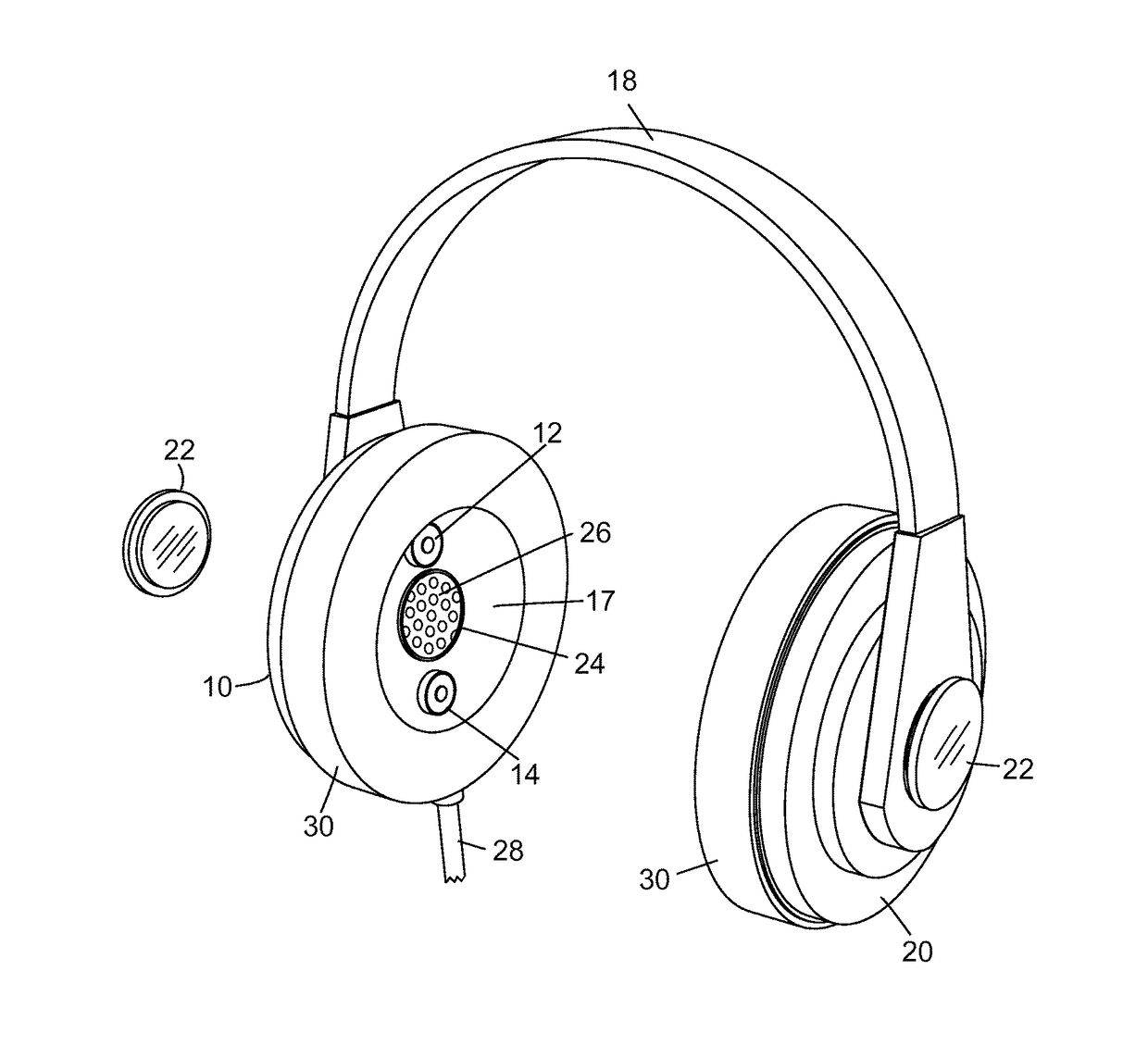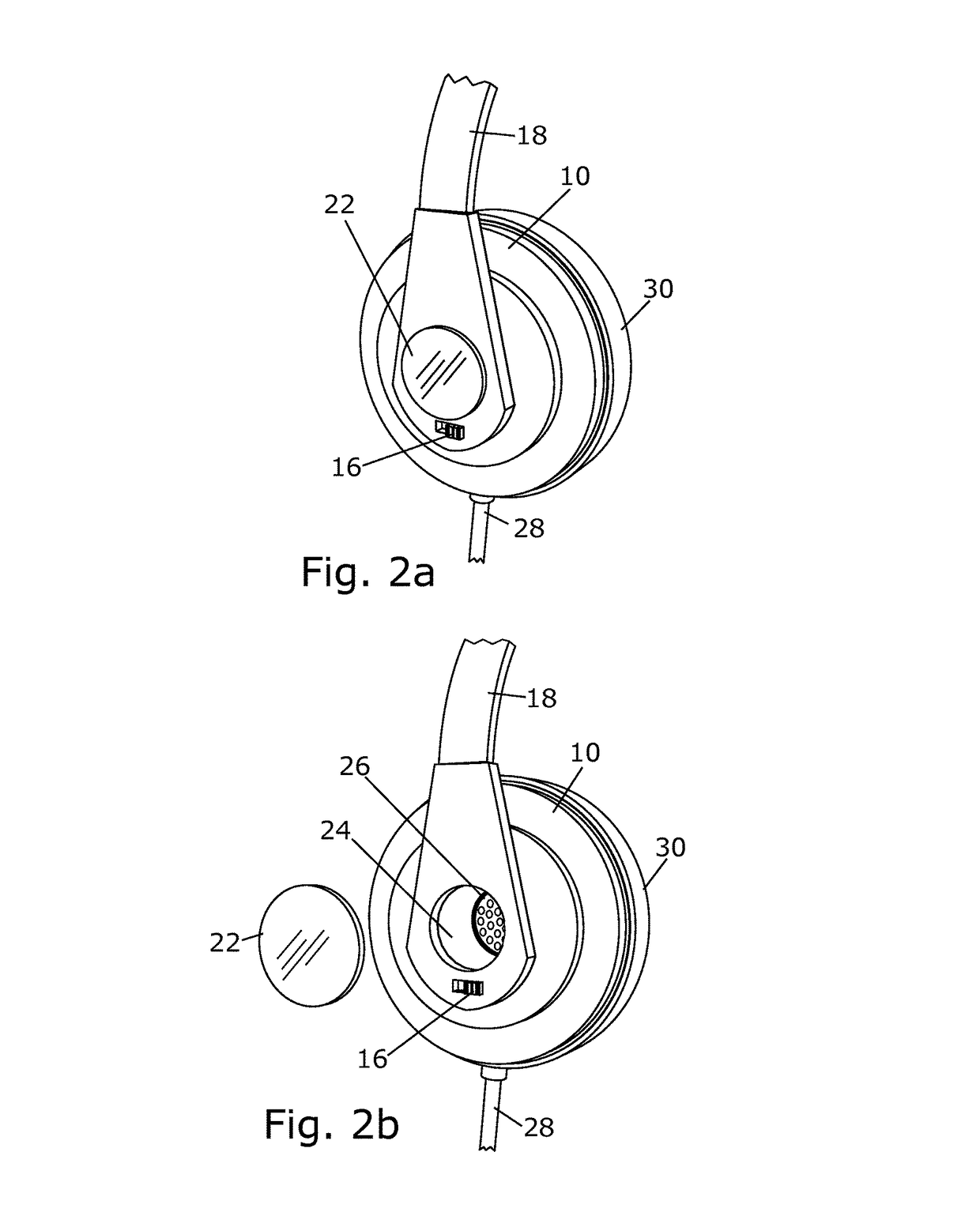Unilateral dual transducer stereo headphone
- Summary
- Abstract
- Description
- Claims
- Application Information
AI Technical Summary
Benefits of technology
Problems solved by technology
Method used
Image
Examples
Embodiment Construction
[0020]As shown in FIG. 1, one embodiment of the device is similar to standard circumaural (over-the-ear) headphones. However, rather than the acoustical drivers, speakers, or transducers 12, 14 being placed in opposite earpieces as in a standard headphone, they are placed in the same earpiece 10—one above the external ear opening 12 and one below it 14, allowing for the two channels to be distinguished, and sonic differences and movement between the two channels to be recognized. The shape of the outer ear, which normally allows us to vertically localize ambient sounds, will also allow the user to distinguish between the “left” and “right” channels, which are now effectively “top” and “bottom” channels. Wires 13 and 15 run from the upper and lower transducers, respectively (FIG. 3).
[0021]An optional two-way switch 16 (visible in FIGS. 2a, 2b, and 3) swaps the left and right channels, based on user preference (so the “left” channel can come through the top transducer and the “right” ...
PUM
 Login to View More
Login to View More Abstract
Description
Claims
Application Information
 Login to View More
Login to View More - R&D
- Intellectual Property
- Life Sciences
- Materials
- Tech Scout
- Unparalleled Data Quality
- Higher Quality Content
- 60% Fewer Hallucinations
Browse by: Latest US Patents, China's latest patents, Technical Efficacy Thesaurus, Application Domain, Technology Topic, Popular Technical Reports.
© 2025 PatSnap. All rights reserved.Legal|Privacy policy|Modern Slavery Act Transparency Statement|Sitemap|About US| Contact US: help@patsnap.com



